So here we are again with the third and almost certainly final Mario Party on Nintendo Switch. We’ve had something new that tried to be old, something old that tried to be new, and now we move on to the logical next step: why not both? Super Mario Party Jamboree’s influence and intent isn’t difficult to spot, and it largely succeeds in pulling the best from those piles. This isn’t a game out to re-invent or enforce specific gimmicks. Instead it’s a straightforward but highly polished affair, with solid boards that evoke the series’ past and a collection of largely serviceable minigames packed in. That might sound spectacular on paper, and yet along the way it manages to be the biggest Mario Party ever thrown, and one of the best in decades.
Before even getting to the fun at the heart of Jamboree, it manages to make a strong impression with the biggest roster of any Mario Party. You have all the expected headliners (including Kevin Afghani’s debut as Waluigi), frequent guests (please don’t sideline Toadette ever again), and some goons that are lucky to be here (Spike!). While there are only two newcomers, they’re very much welcome. Pauline’s rightfully cemented herself as a spinoff staple at this point, and everyone I’ve shown this game to instantly fell in love with Ninji. Keep the lil guy coming, Nintendo!
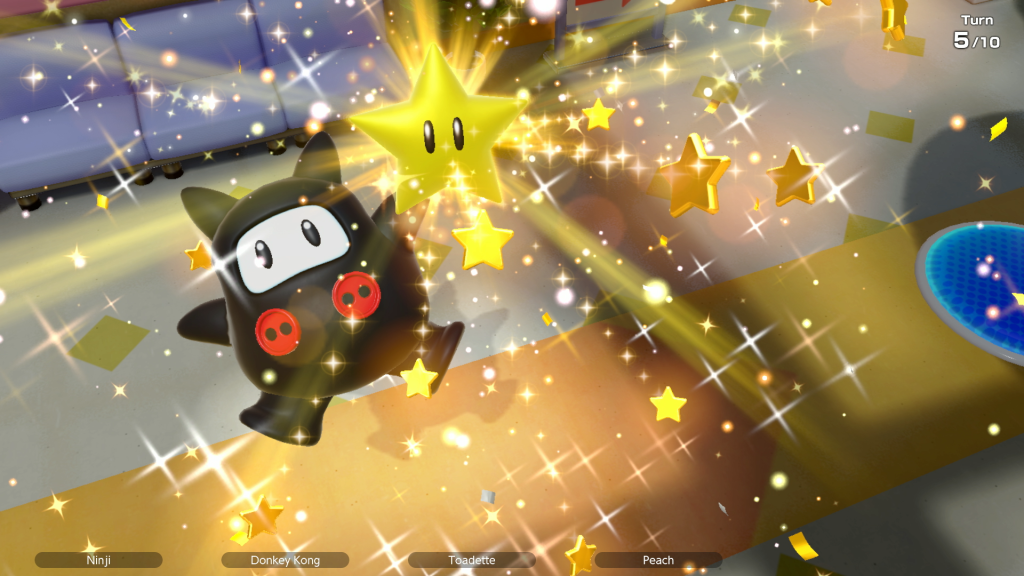
As touched on, the core elements here are the boards and the minigames. Without those, we don’t have a Mario Party. While it starts off with just a meager four boards, you’ll be able to unlock two classics from the N64 days fairly quickly as well as a customary Bowser board after that. Both Mario’s Rainbow Castle and Western Land benefit from the glow-up, and are definitely welcome, but I can’t help but wonder if they should’ve been in Mario Party Superstars instead. The alternative is that developer Nintendo Cube is setting a (welcome) precedent for microdosing nostalgia.
Those two are fairly straightforward boards, which actually does a great job of better emphasizing the concepts at play in the new ones. Mega Wiggler’s Tree Party makes for a solid introduction and Goomba Lagoon’s changing tides will reward savvy players, but it’s Roll ‘em Raceway and Rainbow Galleria that make the strongest impression here. They both have interesting item mechanics, depth to their layouts (via sheer scale and tactfully navigating three floors respectively), but still feel comfortably like Mario Party. Collectively, these seven options make for a great assortment, ripe for replayability and stronger than pretty much anything from the last handful of entries in the series (remakes notwithstanding).
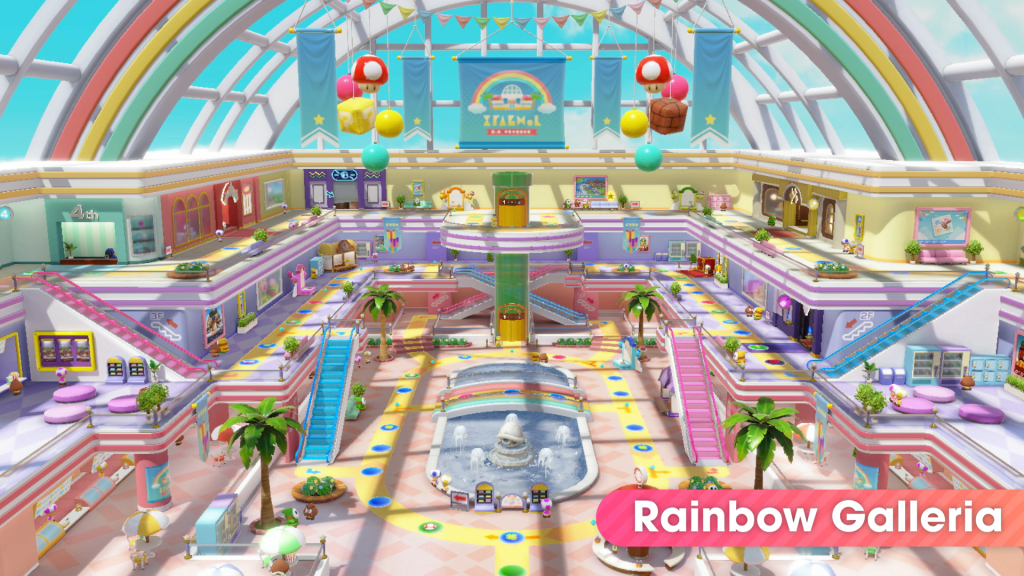
It’s not just the specific board elements that manage to work well, though. It’s how Jamboree embraces pretty much everything tried in previous games and works them into its collection of party favors. Item shops, variety in how boards handle Stars, come back opportunities for players that aren’t inherently performance based, unexpected events to keep things exciting — up to and including Chance Time; they’re all here and done fairly well. It does mean that the inherent randomness of the formula is alive and well, but if I wanted a fair experience where I get to keep all my friends I wouldn’t play Mario Party.
There is one downside to just how much is here — Jamboree games can run long. I was actually surprised to see the “standard” turn count as ten and yet still with an estimated playtime of 90 minutes. Nowhere does that feel more pronounced than the closest thing this game has to a gimmick of its own. Jamboree Buddies will sometimes appear, giving players a chance to get them to partner up with them for benefits like better dice rolls and extra coins. They even “double” any positive or negative effects you run into. Land on a red space? Lose coins twice. Get to the Star? You can buy two!
That’s all fine in and of itself, as is the way other players can steal the buddy by passing, creating a separate kind of mad dash than the Star. The issue is that deciding who recruits them comes down to an extra long minigame event. These can take upwards of five minutes all on their own and while some of these games are enjoyable on their own merits, they simply take too long in this context. It’s the epitome of Jamboree’s pacing problems along with how slow characters tend to move around the boards, and while I imagine the latter can be fixed via some kind of update I don’t think there’s any remedy for the former.
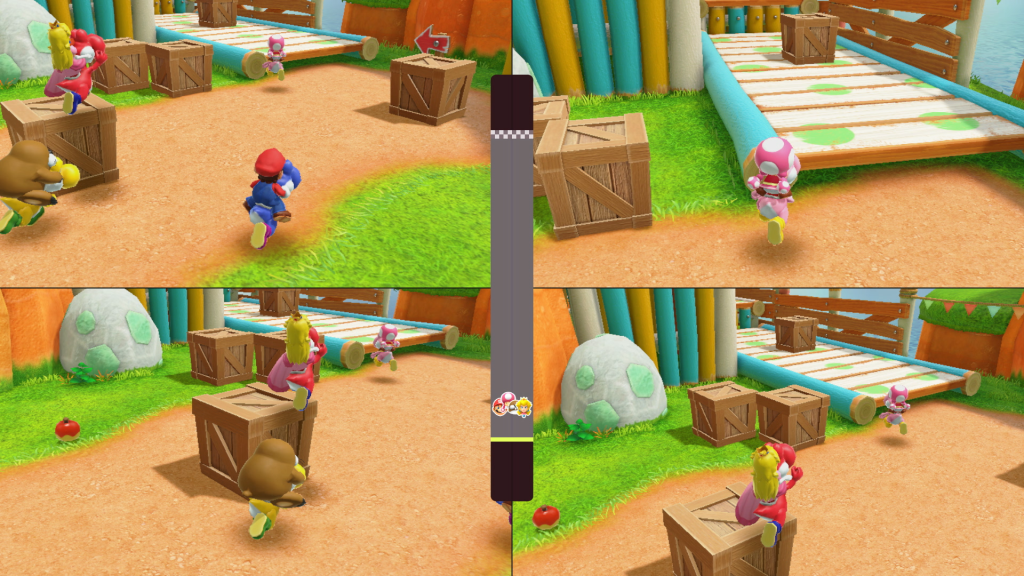
Speaking of minigames, we’ve got 112 to dive into here. That amount sounds impressive, but only about 50 of them are minigames in the sense that you’ll encounter them between turns. Even if we include Item and Duel minigames into that total, it still means that about half of the minigames available are exclusive to non-Party modes. That’s nothing new for the series, though the sequestering of specific games seems more pronounced in Jamboree.
By and large, it’s a good collection of games in terms of variety and novel concepts, but only a few strike me as “all-timers” that can rub shoulders with the likes of Bowser’s Big Blast and Pushy Penguins. Prime Cut, where you and a partner have to eyeball portioning out an exceptionally rendered steak, is definitely a new favorite along with All the Marbles, a fairly simple foot race through the orbs that give it its namesake. Whether or not it’s fair to judge this lineup against the series’ legacy is definitely a question to consider, but I can’t deny that the bulk of these games aren’t sticking with me.
Don’t confuse the lack of iconic standouts with overall enjoyability in the moment. The number of fun diversions far outweigh the duds, though it is worth mentioning there are some “quiz” and “outlast” style minigames that feed into the previously mentioned pacing problems. Not a unique problem to Jamboree, but one made more notable alongside everything else that can slow it down.
Jamboree managed to learn a big lesson from Super. Unlike its predecessor, it lets players disable motion-based minigames. This allows the game to both be played in handheld and with many more controller options while also making for a more consistent experience. The flipside of that is that the Joy-Con are more deemphasized – a continuous trend now that we’re at the tailend of the Switch’s lifespan versus the earlier days. I still stand by Super being a great showcase of the controller’s potential, but I’m glad its focus has largely been pushed into separate corners.
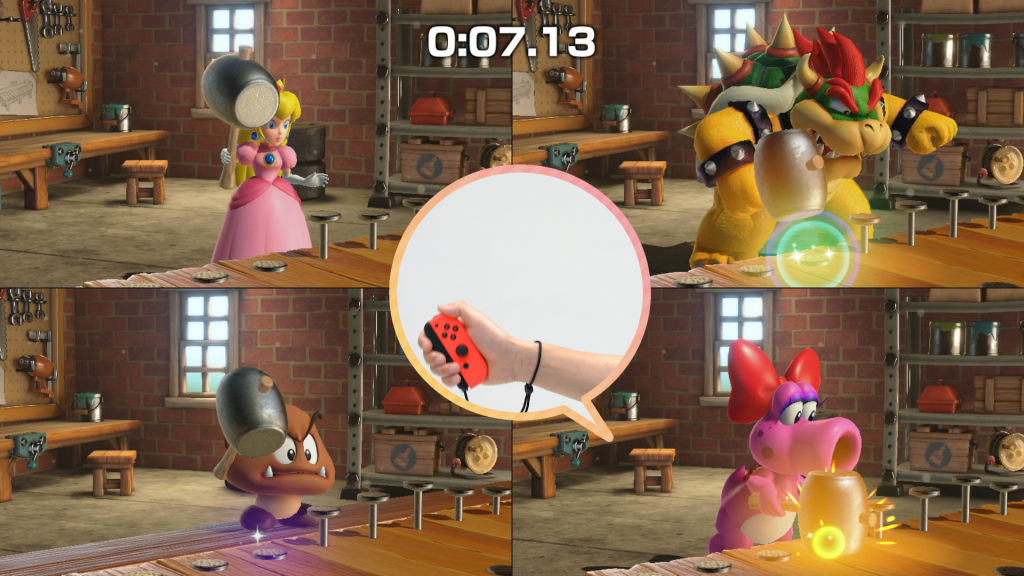
Case and point — Rhythm Kitchen. This separate mode is all about waggling in time to the beat. It works on that level (though the music element could use some work) and is uplifted by a cute cooking show theme. As a co-op based diversion, it stands out compared to its fellows. I don’t think I have any desire to revisit Toad’s Item Factory or Paratroopa Flight School. The same goes for the not-so motion based Bowser Kaboom Squad. None of them really fail at what they set out to do, but their aspirations only go that far.
The winner here is definitely the 20-player Koopathlon. As competitors gather coins through a series of increasingly difficult minigames, your characters will run along a track to see who can cross the finish line first. Simple, yes. Addictive and perfectly suited to online multiplayer with strangers? Definitely. It’s about as battle royale as Mario Party can get and it works well as an equivalent to the PvP subgenre.
Tying all of this together is a simple, appropriate theme — a party. It’s enough to give Jamboree some life to its menus and presentation, including its simple but enjoyable single player “story” mode. I’ve been playing these games for decades (thanks for all the rentals, Mom) and I don’t think any of the previous entries have tried this hard to look this consistently good.
Consistency really is the name of the game here. No individual piece of Super Mario Party Jamboree is world shattering or a must play. What it is as a whole though is perhaps the most serviceable and thoroughly realized entry since at least the GameCube era. It absolutely outclasses its fellow “Super,” though I think there’s definitely room in your collection/rotation for both Jamboree and Mario Party Superstars. Considering how thoroughly exceptional that entry is (again, longtime fan here) that’s high praise.
Ultimately, the biggest takeaway here is that the team behind these multiplayer mainstays have finally nailed the formula, and the future of the Mario Party series is looking brighter than it has in a long, long time. Keep ‘em like this and I’ll RSVP every time.
Leave a Comment
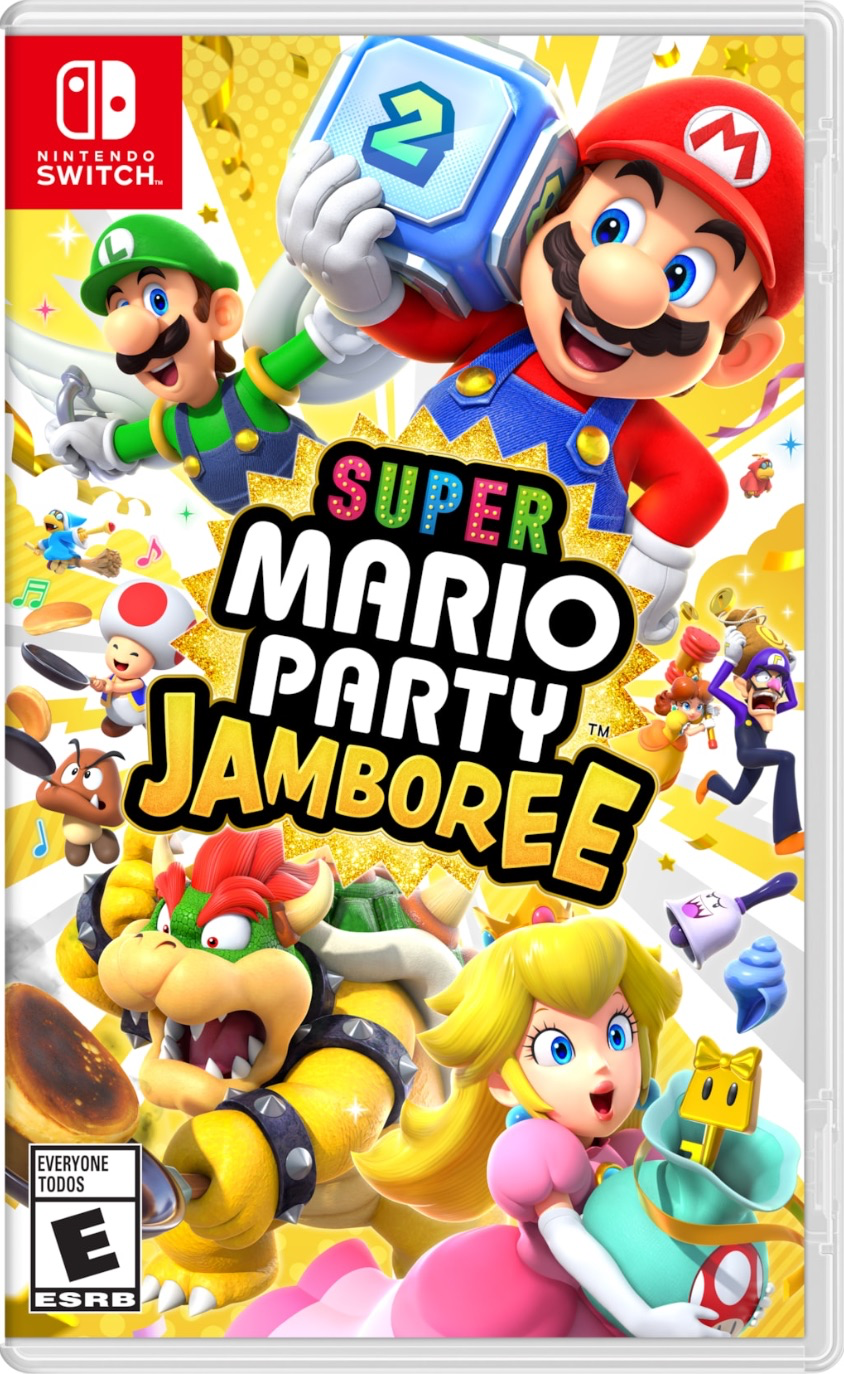
System: Nintendo Switch
Release Date: October 17, 2024
Categories: Party, Multiplayer, Board Game
Publisher: Nintendo
Developer: Nintendo Cube


